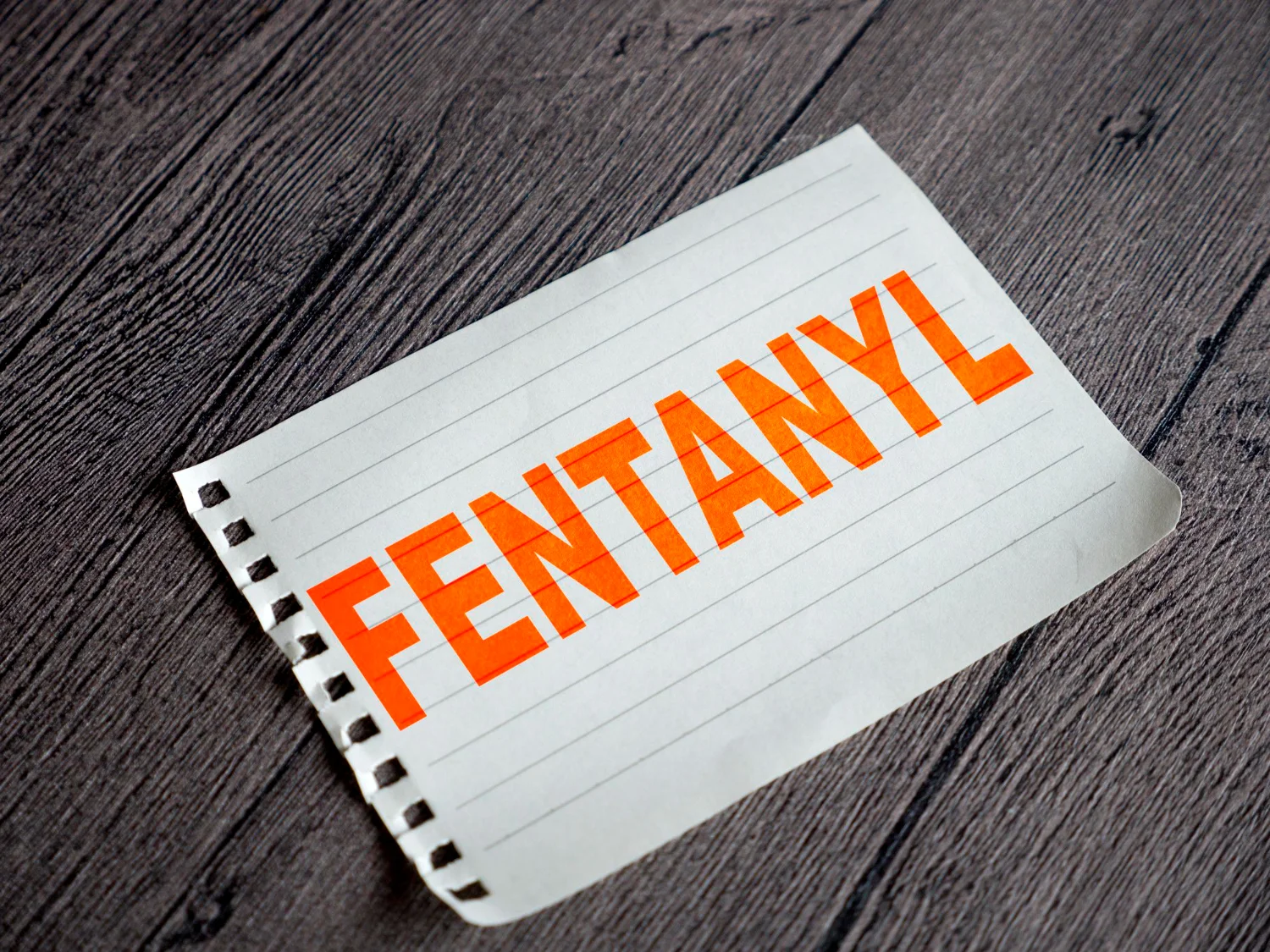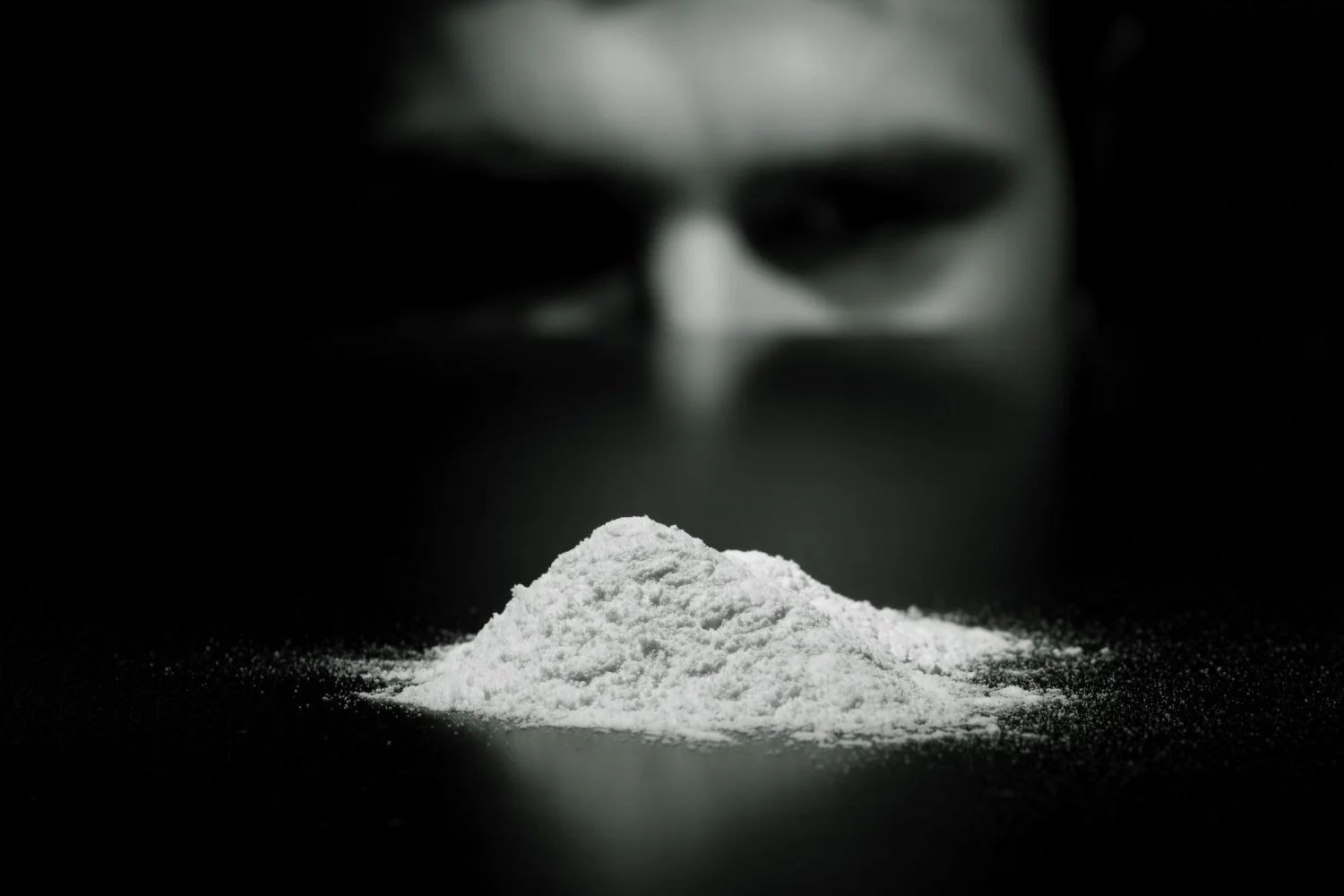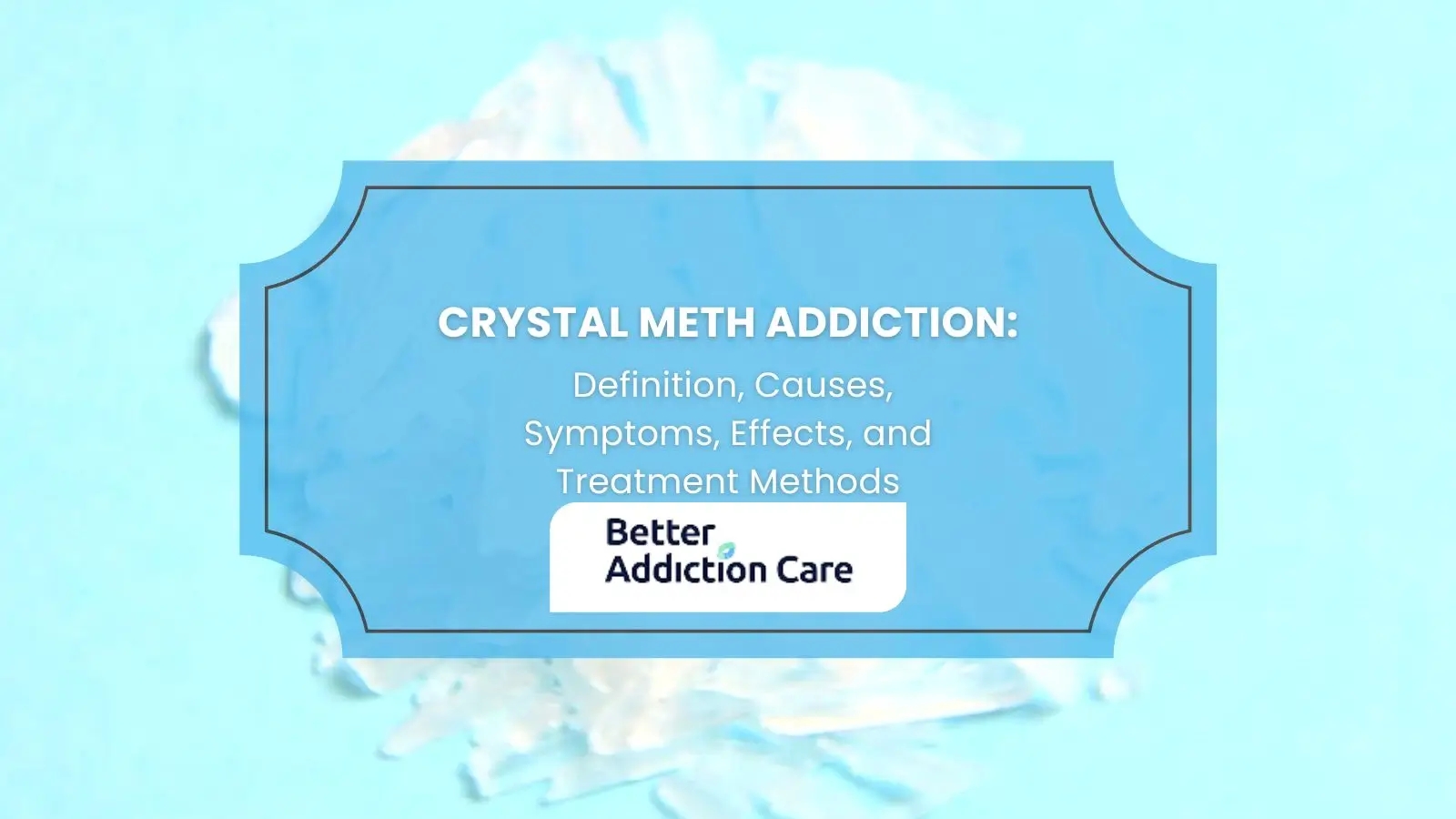Codeine Addiction: Definition, Symptoms, Causes, Health Effects, and Treatment
Codeine addiction is a complex medical condition that occurs due to both physical and psychological dependence on opioid medication. Similar to morphine and hydrocodone, codeine leads you to take higher doses repeatedly to achieve pain relief, increasing the risk of addiction and its associated health issues.
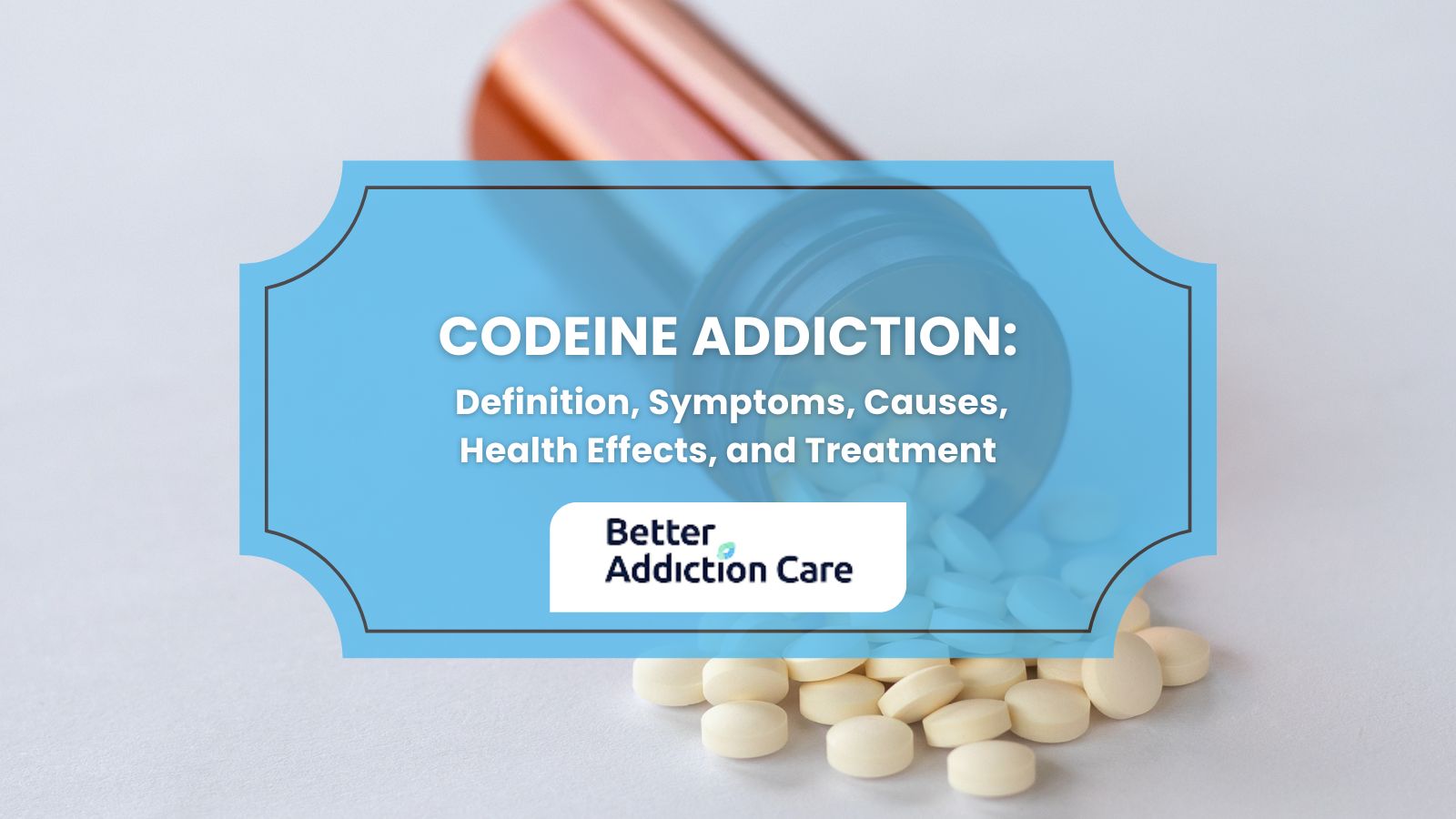
According to Livingstone, M. J.’s 2017 study, ‘Codeine use among children in the United States: a nationally representative study from 1996–2013’, Pediatric codeine use in the US remained relatively stable from 1996 to 2013, with about 1.08 million users in 1996 and 1.03 million in 2013. Children aged 12-17 are more likely to use codeine than younger children. Despite a significant decline, over 1 million children still used codeine in 2013.
The symptoms of codeine addiction are a blue tinge to lips and fingernails, muscle twitches or spasms, dizziness, dry mouth, increased tolerance, withdrawal symptoms, secrecy, and social isolation.
The main causes of codeine addiction are genetic factors such as the OPRM1 gene, family history, mental health disorders, environmental influences such as peer influence, stressful life events, availability, and chronic pain conditions like migraine, irritable bowel syndrome, and arthritis.
The health effects of codeine addiction are nausea and vomiting, constipation, itching and rashes, difficulty urinating, seizures, and stomach pain.
The treatment options for codeine addiction are medical detoxification, cognitive behavioral therapy (CBT), motivational interviewing, medications, and support groups.
What is Codeine Addiction?
Codeine addiction is a chronic condition where a person develops a compulsive need to use codeine, an opioid painkiller, despite harmful consequences. Codeine addiction starts with prescribed use for pain or cough, but progresses due to changes in brain chemistry, genetics, and mental health. Tolerance and dependence develop over time, making it hard to stop without help. You begin using for relief, but the body adapts, leading to withdrawal when not using.
What is Codeine?
Codeine is an opioid that works on opioid receptors and the nervous system. Codeine is distinct from benzodiazepines, but it shares some similar effects with them. Codeine is effective in treating mild to moderate pain and is recommended for alleviating a persistent cough. The drug is usually prescribed for irritable bowel syndrome and diarrhea.
Why is Codeine Addictive?
Codeine is addictive due to its effect on the body and brain. Codeine connects with opioid receptors in the brain and induces feelings of pain relief, relaxation, and euphoria. Individuals repeatedly use codeine for its pleasurable effects, leading to physical and psychological dependence. This dependence encourages individuals to take higher than prescribed doses or take them for extended periods, which in turn increases their addiction.
What Are The Signs and Symptoms of Codeine Addiction?
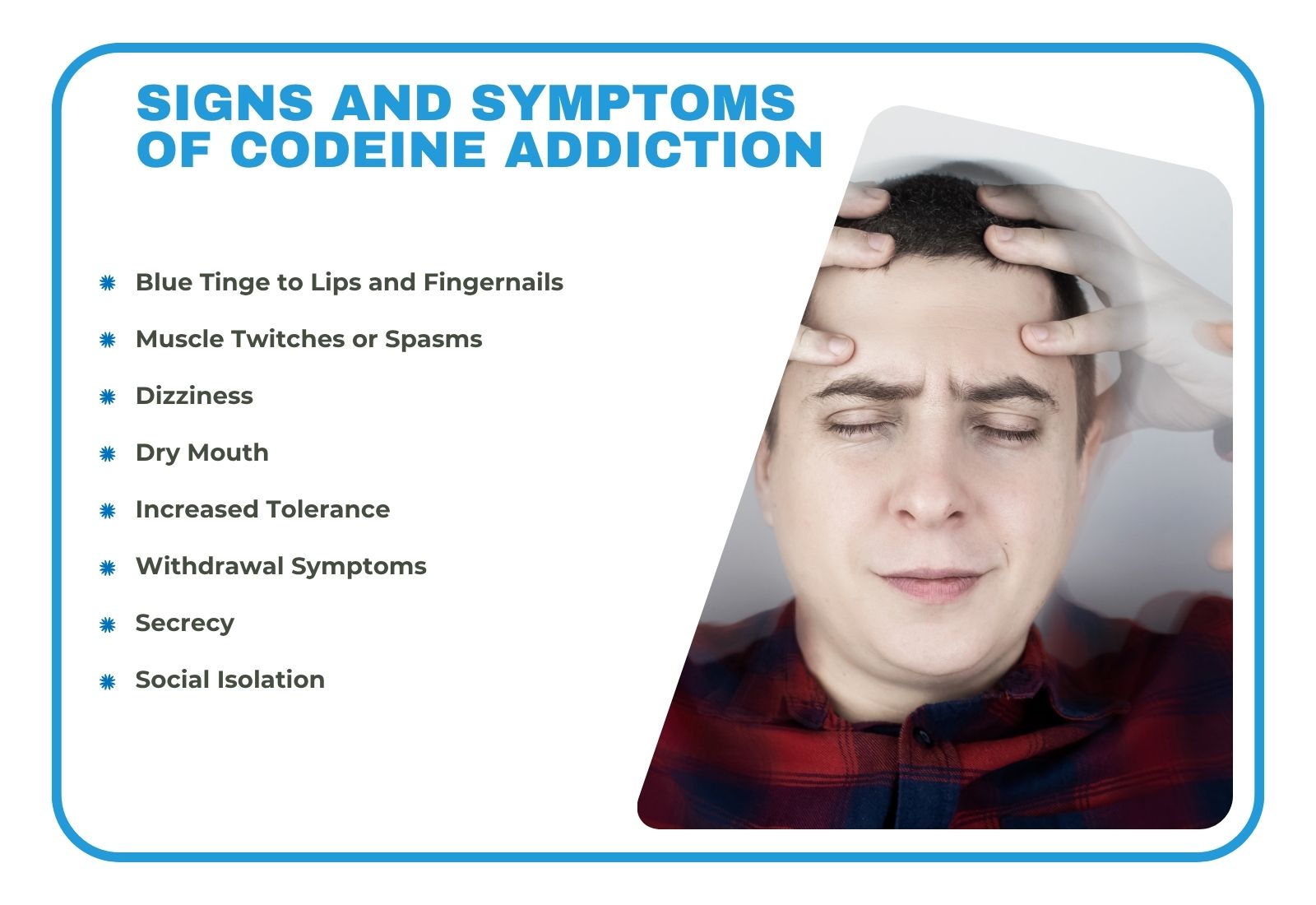
The common signs and symptoms of codeine addiction are a blue tinge to lips and fingernails, muscle twitches or spasms, dizziness, dry mouth, increased tolerance, withdrawal symptoms, secrecy, and social isolation.
The common symptoms of codeine addiction are listed below:
-
Blue Tinge to Lips and Fingernails: Cyanosis, characterized by a blue tinge to lips and fingernails, is caused by insufficient oxygen in the blood or poor circulation due to codeine's impact on blood flow.
-
Muscle Twitches or Spasms: Codeine interacts with the nervous system, leading to muscle twitches or spasms. These involuntary contractions are both physical and psychological effects of dependence.
-
Dizziness: Dizziness commonly occurs due to the body's chemical imbalances stemming from reduced codeine intake, leading to a spinning sensation.
-
Dry Mouth: Codeine binds with opioid receptors, which reduces saliva production. This results in a persistently dry mouth or a cottony feeling, difficulty swallowing, and increased thirst.
-
Increased Tolerance: Tolerance to codeine increases when an individual’s body adapts to the drug, requiring higher doses to achieve the same effects. This leads users to exceed prescribed amounts.
-
Withdrawal Symptoms: Withdrawal symptoms upon decreasing or stopping codeine intake include muscle pain, insomnia, sweating, agitation, rapid heartbeat, nausea, vomiting, and intense cravings for the drug.
-
Secrecy: Those addicted to codeine hide their drug use from family and friends, making excuses or lying to avoid judgment and maintaining their habits discreetly.
-
Social Isolation: Users tend to withdraw from social relationships, committing to drug use over spending time with loved ones. Feelings of guilt, shame, and behavioral changes contribute to this isolation.
What Are The Causes of Codeine Addiction?
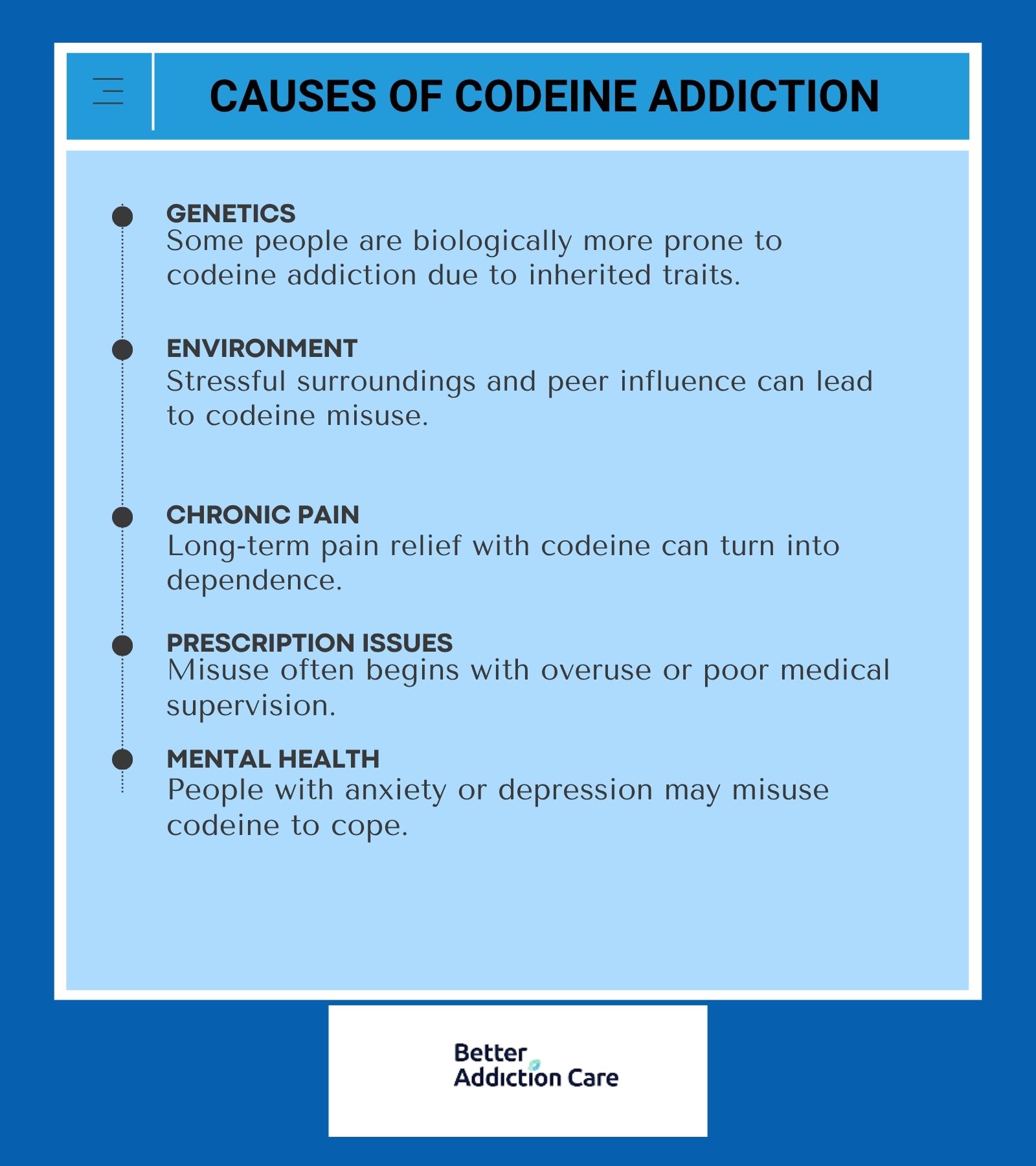
The causes of codeine addiction include genetic factors, mental health disorders, environmental influences, chronic pain conditions, and prescription mismanagement.
Here are the common causes of codeine addiction:
-
Genetic Factors: Genetic factors help to identify the inheritance of traits discretely. Variation in the opioid receptor system, e.g., OPRM1, increases medication sensitivity, leading some individuals to experience codeine cravings. According to Oertel, B. G.’s 2012 study, ‘Genetic-epigenetic interaction modulates μ-opioid receptor regulation’, the OPRM1 gene variant 118A>G increases opioid addiction risk through a genetic-epigenetic mechanism. This variant creates enhanced DNA methylation that prevents μ-opioid receptor upregulation in the brain tissue of chronic opiate users brain tissue. While individuals with normal genes compensate for chronic heroin exposure by increasing receptor density, carriers of the 118G variant lose this protective compensatory response, depleting their opioid system's natural adaptation and increasing addiction vulnerability.
-
Environmental Influences: Environmental influences affect body functioning through family dynamics, peer relationships, and community resources. These factors increase the risk of codeine addiction. Individuals use codeine to cope with stress from financial issues and family conflicts. Peer pressure encourages some to use codeine for emotional relief, leading to dependency. Easy access to codeine raises the likelihood of use without a prescription.
-
Chronic Pain Conditions: Chronic pain is long-standing pain that continues beyond the usual recovery period. People with migraine and arthritis use it for managing persistent pain when other treatments are ineffective. People with irritable bowel syndrome use it to reduce abdominal pain and cramping. Initially, it provides relief, but its long-term use leads to addiction.
-
Prescription Mismanagement: Overprescribing or prolonged use beyond medical necessity leads to misuse and addiction, especially when users escalate doses without medical supervision.
-
Co-occurring Mental Health Conditions: Co-occurring mental health conditions such as anxiety and depression, lead to using codeine as a form of self-medication. Relying on codeine to manage these symptoms increases your risk of developing dependence and addiction.
What Are The Health Effects of Codeine Addiction?
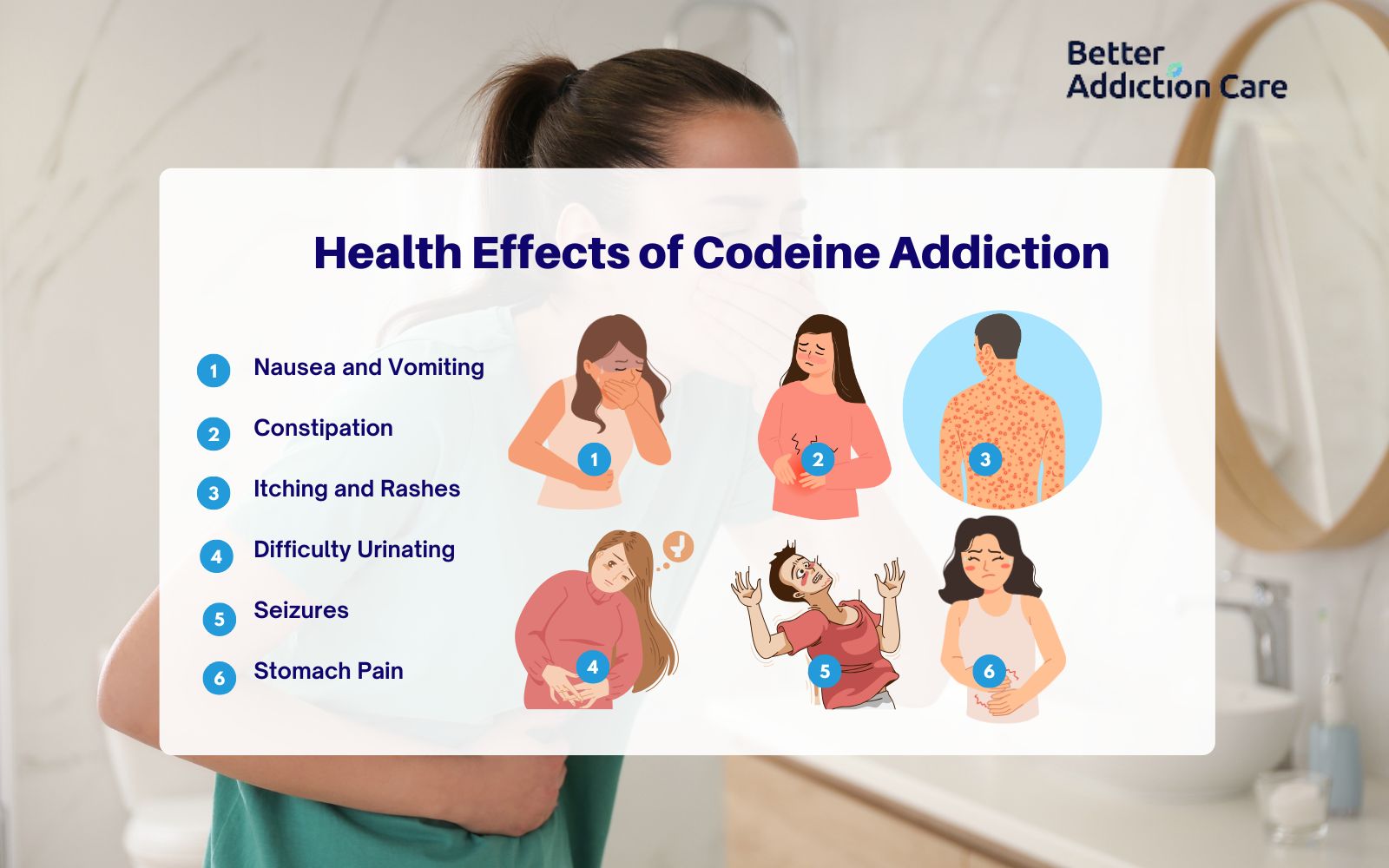
The health effects of codeine addiction are nausea and vomiting, constipation, itching and rashes, difficulty urinating, seizures, and stomach pain.
Here are the key health effects of codeine addiction:
-
Nausea and Vomiting: Codeine disrupts the digestive system and induces feelings of queasiness due to its effects on the brain's chemical balance and interference with normal gut movements. Common opioids like codeine, pholcodine, and dihydrocodeine, while used to treat coughs, lead to side effects such as drowsiness, constipation, and nausea. Frequent use or high doses increases the likelihood of these adverse effects.
-
Constipation: Constipation happens when codeine reduces the natural movement of muscles in the intestines, making it harder for waste to pass. This leads to hard stools and less frequent bowel movements. Using codeine regularly puts you at higher risk for uncomfortable and ongoing constipation.
-
Itching and Rashes: Itching and rashes are areas of irritated or swollen skin. Codeine addiction triggers itching and rashes. Codeine causes itching and rashes by directly activating human mast cells to release histamine and inflammatory mediators. According to Sheen, C. H.’s 2007 study, ‘Codeine induces human mast cell chemokine and cytokine production: involvement of G-protein activation’, codeine induces up to 60% mast cell degranulation at 5.0 μg/ml concentration and triggers production of inflammatory chemokines within 3-8 hours of exposure.
-
Difficulty Urinating: Long-term use of codeine suppresses the parasympathetic nervous system, weakens bladder contraction, and hinders urine flow. It affects the brain's ability to signal bladder fullness, causing delays in urination. Prolonged consumption raises the risk of bladder damage and urinary tract infections (UTIs).
-
Seizures: Seizures are sudden changes in behavior, movement, and consciousness due to abnormal electrical activity in the brain. Codeine addiction causes seizures, especially when people are taking high doses or with a history of epilepsy. The codeine disrupts the brain and leads to abnormal electrical activity, causing seizures. The risk increases when individuals combine medication with other substances.
-
Stomach Pain: Codeine increases stomach pain by affecting the digestive system and bowel movements. It relaxes the digestive tract muscles, which results in cramping and bloating. Prolonged use increases the risk of intestinal blockage, nausea, or severe constipation.
What Are The Symptoms Of Codeine Withdrawal?
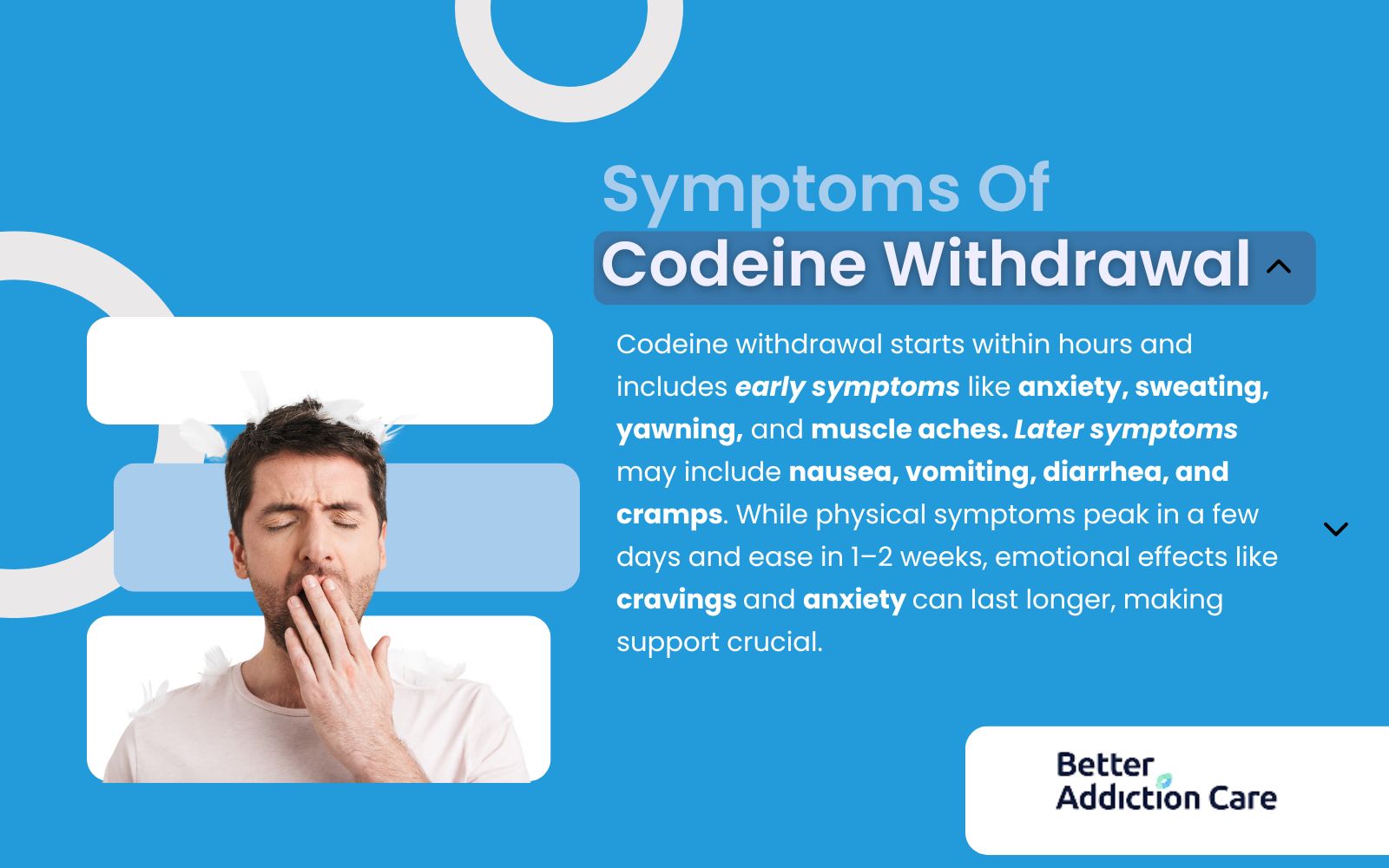
Codeine withdrawal symptoms include agitation, anxiety, muscle aches, tearing, insomnia, runny nose, sweating, yawning, and rapid heartbeat in the early stage. In the late stage, symptoms progress to abdominal cramps, diarrhea, dilated pupils, goosebumps, nausea, and vomiting. These symptoms occur as your body adjusts to the absence of codeine, beginning within hours after the last dose, peaking in a few days, and subsiding over one to two weeks. Psychological effects like irritability, anxiety, and cravings last longer, making professional support essential during recovery.
What Are The Treatment Options For Codeine Addiction?
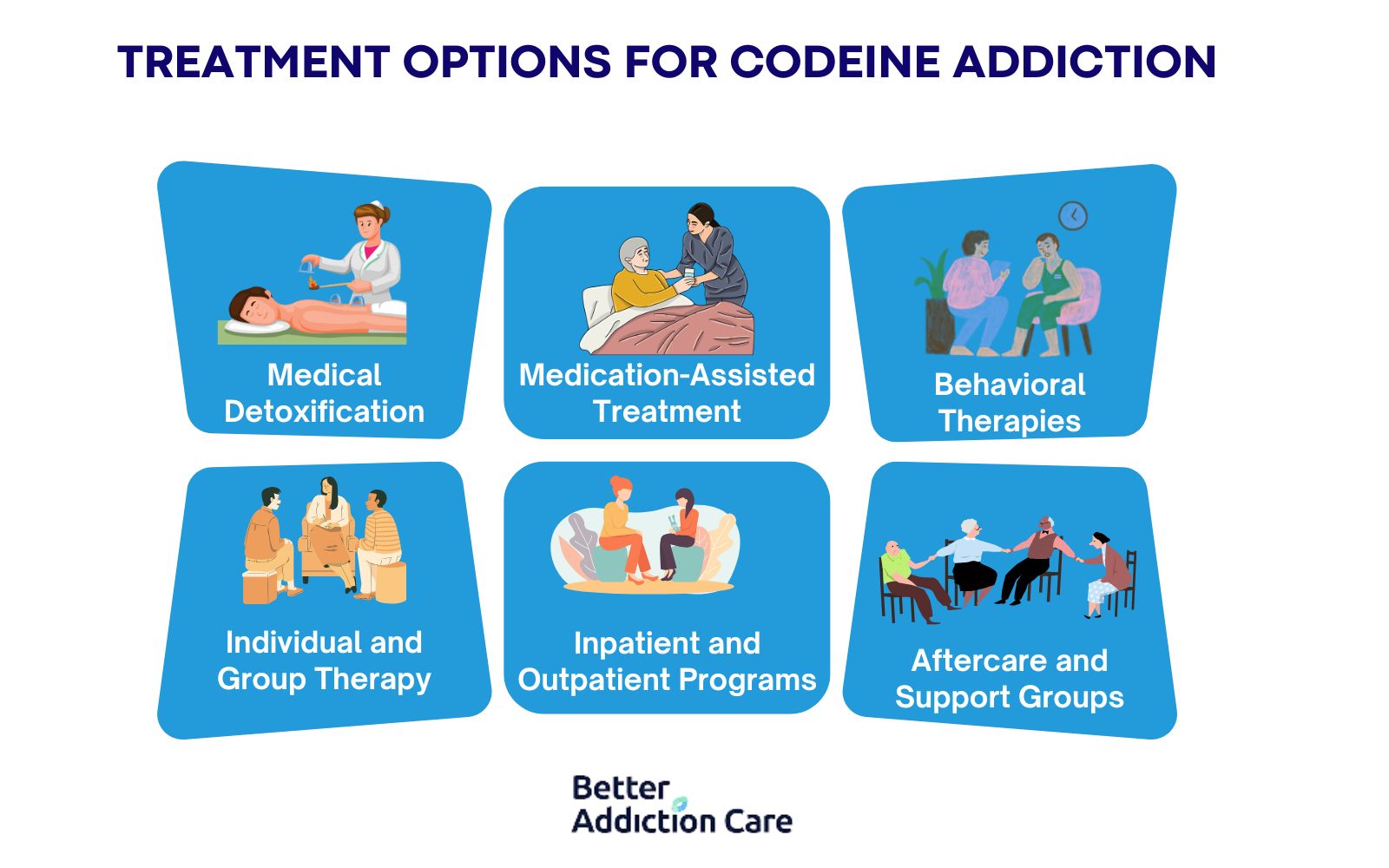
The treatment options for codeine addiction include medical detoxification, medication-assisted treatment, behavioral therapies, individual and group counseling, inpatient and outpatient programs, and aftercare support systems. These comprehensive approaches are designed to address both the physical dependence and psychological aspects of codeine addiction through supervised withdrawal management, therapeutic interventions, and ongoing recovery support.
Here are the treatment options for codeine addiction in detail below:
-
Medical Detoxification: This is the first step in treatment, where individuals undergo supervised withdrawal to manage symptoms like nausea, anxiety, and muscle pain. In detox, medical professionals use medications to reduce discomfort and ensure safety.
-
Medication-Assisted Treatment (MAT): MAT involves the use of medications such as buprenorphine, methadone, or naltrexone alongside counseling. These medications reduce cravings and withdrawal symptoms, supporting long-term recovery. According to McAnulty, C.’s 2022 study, ‘Buprenorphine/naloxone and methadone effectiveness for reducing craving in individuals with prescription opioid use disorder: Exploratory results from an open-label, pragmatic randomized controlled trial’, both buprenorphine/naloxone and methadone effectively reduced drug craving over 22 weeks of treatment. However, buprenorphine/naloxone was more effective, with patients reporting average craving scores of 4.04 compared to 5.13 for methadone patients (on a scale where lower numbers indicate less craving). The difference was most noticeable in the first 2 weeks of treatment, when buprenorphine/naloxone patients had craving scores that were 1.58 points lower than methadone patients, suggesting that buprenorphine/naloxone provides faster relief from drug cravings.
-
Behavioral Therapies: Cognitive Behavioral Therapy (CBT) specifically targets the negative thought patterns and behaviors linked to codeine use. It helps individuals develop coping skills to manage cravings and triggers unique to opioid addiction, and teaches relapse prevention strategies tailored to codeine dependence.
-
Individual and Group Therapy: One-on-one counseling focuses on identifying personal triggers and habits related to codeine misuse, addressing underlying mental health issues, and building personalized recovery plans. Group therapy provides peer support from others recovering from codeine addiction, fostering shared experiences and encouragement in a safe environment.
-
Inpatient and Outpatient Programs: Inpatient rehab centers offer medically supervised detoxification and 24/7 care designed to manage codeine withdrawal safely while providing intensive behavioral therapies. Outpatient programs allow individuals to receive structured therapy and counseling for codeine addiction while maintaining daily responsibilities, supporting gradual reintegration into normal life. According to Day, E.’s 2011 study, ‘Outpatient versus inpatient opioid detoxification: A randomized controlled trial’, inpatient detoxification programs achieved completion rates of 51.4% while outpatient programs achieved completion rates of 36.4%, with both treatment settings demonstrating the significant challenge of maintaining long-term abstinence, as only 16% of all participants remained opioid-free at one month and even fewer at six months regardless of their initial treatment setting.
-
Aftercare and Support Groups: Aftercare and support groups include ongoing therapy, structured sober living environments, and 12-Step programs that reinforce accountability and routine. Staying connected to these resources helps you maintain long-term sobriety and avoid relapse after treatment ends.
What Are The Different Forms Of Codeine?
The different forms of codeine include tablets, cough syrup, general liquids, and injections.
Are The Withdrawal Symptoms From Codeine And Tramadol Similar?
Yes, withdrawal symptoms from codeine and tramadol share similarities, but there are some differences due to their distinct mechanism of action and pharmacological properties. Both medications share common withdrawal symptoms, such as nausea, vomiting, fatigue, diarrhea, sweating, mood swings, irritability, chills, and anxiety, but tramadol addiction causes additional symptoms due to its serotonin-norepinephrine reuptake inhibitors (SNRIs) properties.
The SNRI effects lead to heightened anxiety, cognitive disturbance, seizures, hallucinations, disorientation, and tinnitus, which are more intense in tramadol than usually observed in codeine withdrawal.
Does Codeine And Cocaine Use Lead To The Development Of Addiction?
Yes, both codeine and cocaine use lead to the development of addiction. Codeine is primarily used to relieve pain and suppress cough. It turns into morphine and interacts with opioid receptors in the brain, leading to pain reduction and euphoria. It increases addiction due to its pleasurable sensation. When people take higher doses or use them for extended periods, they develop tolerance and physical dependence, resulting in addiction.
Whereas cocaine is a strong stimulant, which creates intense euphoria and pleasure. It suddenly increases dopamine and results in increased energy, alertness, and a feeling of happiness. Its regular use alters the brain chemistry and function and results in tolerance. Individuals with time crave more cocaine to recreate the same euphoria, leading to cocaine addiction.
Is Codeine Less Potent Than Morphine?
Yes, codeine is less potent than morphine.
According to the 2018 WHO Guidelines for the Pharmacological and Radiotherapeutic Management of Cancer Pain in Adults and Adolescents, codeine has a potency relative to morphine of 1/10, meaning codeine is one-tenth as potent as morphine, making it significantly less potent than morphine.
On the other hand, Morphine is a powerful opioid medication used to treat severe pain. It is useful in cases like serious injuries and after surgery, but it has a great risk of morphine addiction. It binds to opioid receptors in the brain and spinal cord and creates strong analgesic effects. It requires fewer doses, usually 10-20 mg, to relieve pain, compared to codeine, which requires around 100 mg to get a similar effect.
How To Find Local Drug Rehab Facilities For Codeine Addiction Treatment?
To find a local drug rehab facility for codeine addiction treatment, search online directories, contact local treatment centers directly, ask for referrals from healthcare providers, and use insurance provider lists to locate accredited programs offering opioid addiction care. These facilities provide medical detox, therapy, and structured recovery support tailored to individual needs.
At Better Addiction Care, we make it easier to find trusted alcohol rehab facilities across the United States that address codeine addiction through personalized care and evidence-based treatment. Our online tool lists rehab centers nationwide, helping you explore options that match your needs—whether you're looking for inpatient or outpatient care.
You can browse facilities in states like Oklahoma, Georgia, Pennsylvania, and many more ensuring access to professional support, insurance verification, and confidential assessments no matter where you are.


